History is littered with regular production cars equipped with big engines, often to enhance performance and reward enthusiasts obsessed with their need for speed. While the focus has been on efficiency and downsizing, there remains a special allure to cars equipped with big, powerful engines.
These mechanical marvels deliver raw power while showcasing engineering prowess, heritage, and the unyielding pursuit of performance. From the throaty roar of a V8 to the smooth hum of a V12, these engines represent the heart and soul of some of the most iconic vehicles ever produced.
See also:
1972 Cutlass Supreme: A Closer Look Back At The Timeless Design And Performance
1950s-1960s
Chevrolet Bel Air (1957)
- Engine: 283 cubic inch (4.6 L) V8
- The Bel Air was available with the "Super Turbo Fire V8," producing up to 283 horsepower, which was significant for its time
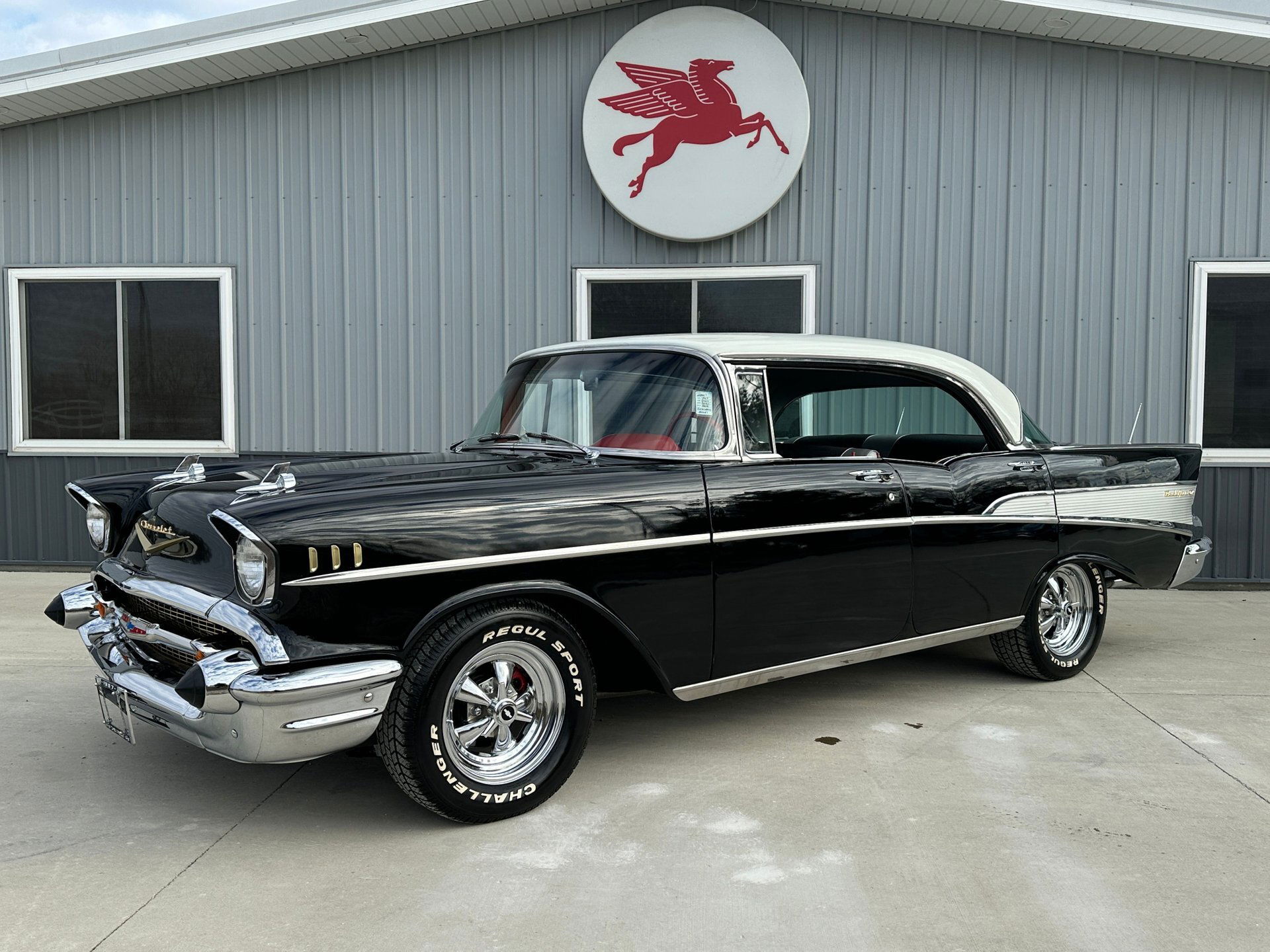
Photo Credit: Classic & Collector Cars
The iconic 1957 Chevrolet Bel Air is famous for its tailfins, chrome accents, and distinctive front grille. Its design has made it a symbol of 1950s automotive culture.
It offered several engine options, including the powerful 283 cu-n (4.6-liter) V8, which was available with fuel injection, a cutting-edge technology at the time. The Bel Air was a top choice for car enthusiasts and remains highly sought after by collectors today.
Ford Galaxie (1960s)
- Engine: 427 cubic inch (7.0 L) V8
- The Galaxie was famous for its powerful 427 V8 engine, a favorite for NASCAR and drag racing
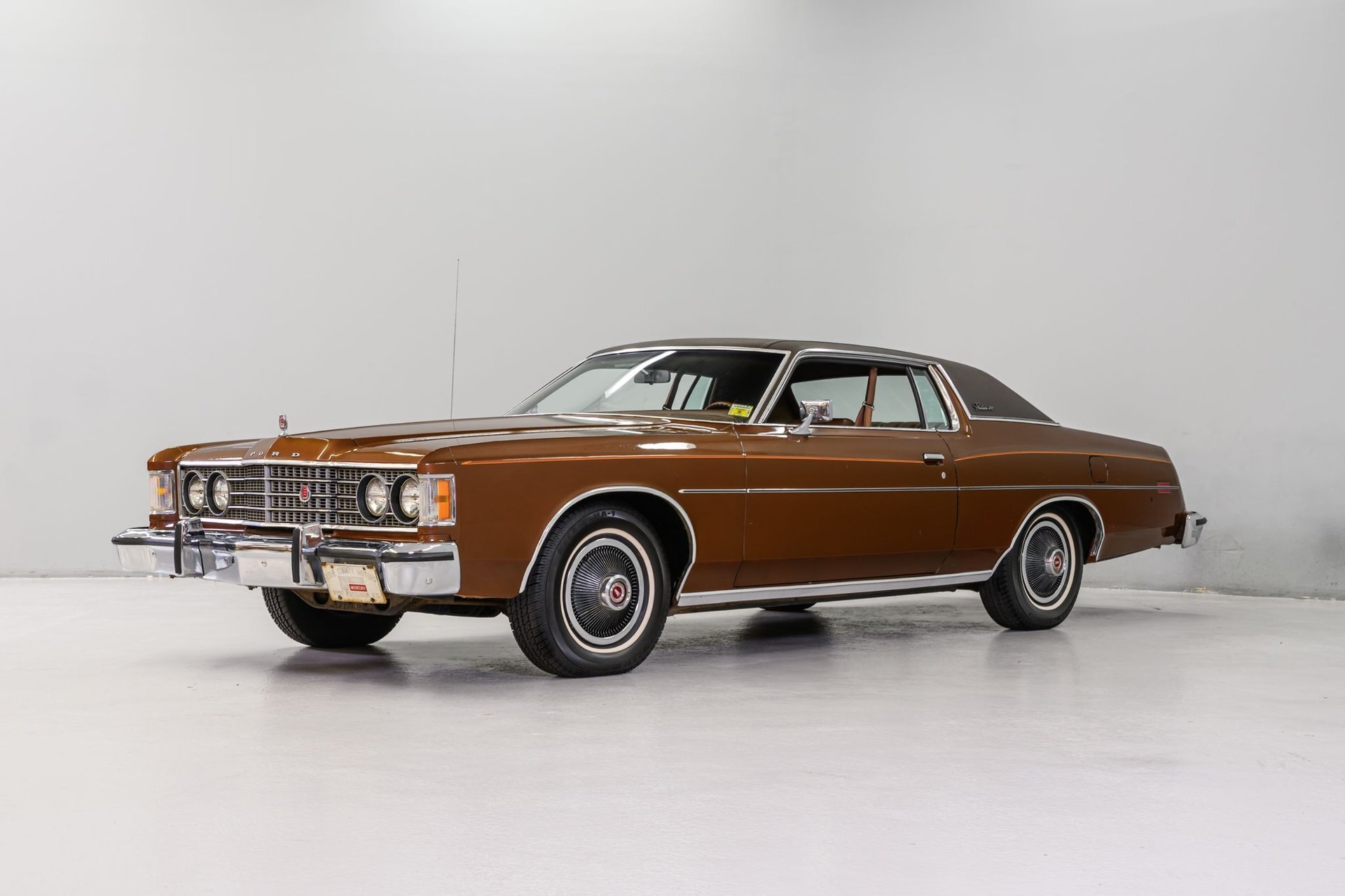
Photo Credit: Autobarn Classic Cars
Ford produced the Galaxie from 1959 to 1974. This classic full-size car was a staple of American automotive culture, especially during the 1960s, the period it went through significant design evolutions. It came in a range of body styles, including sedans, hardtops, convertibles, and station wagons.
The higher-end models with more luxe features were branded as the Galaxie 500 and Galaxie 500XL. As one of the regular production cars in automotive history equipped with burly engines, the 1960s Galaxie flaunted a variety of powerful engines, from the 352 cu-in V8 to the 390 cu-in V8 and the high-performance 427 cu-in V8.
The 427 was popular among racing enthusiasts. American families love large cars, but the Galaxie was not just a family car. Thanks to the 427 V8, the Galaxie was a formidable NASCAR competitor in the ‘60s.
Dodge Charger (1966-1967)
- Engine: 426 cubic inch (7.0 L) Hemi V8
- The Charger, especially with the Hemi engine, became an icon of muscle cars with its immense power and performance
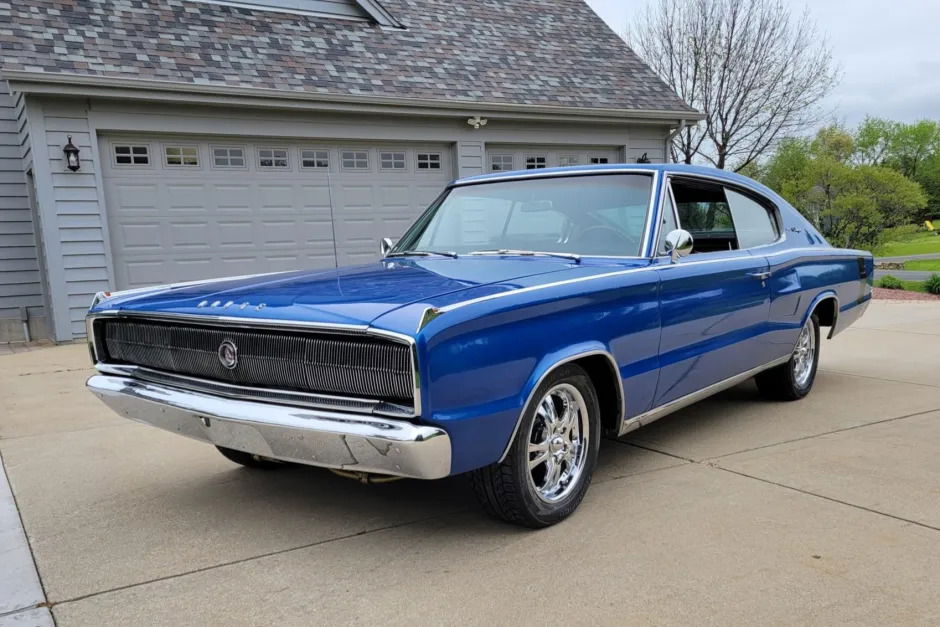
Photo Credit: Bring a Trailer
The 1966-1967 Dodge Charger marked the beginning of the Charger lineage. This 1st-gen pretty much launched the iconic fastback design, complemented by a full-width grille with hidden headlights and a unique full-length tail light panel.
The base engine was a 318 cu-in V8, but more powerful options included the 383 cu-in V8 and the legendary 426 Hemi V8. The 426 Hemi engine, in particular, made the Charger a formidable presence on the road and in racing. It could produce 425 horsepower, making it one of the most powerful engines of its time.
1970s
Chevrolet Chevelle SS (1970)
- Engine: 454 cubic inch (7.4 L) V8
- The Chevelle SS 454 LS6 was one of the most powerful muscle cars of the era, boasting 450 horsepower

Photo Credit: Bring a Trailer
The 1970 Chevrolet Chevelle SS is an iconic muscle car celebrated for its powerful performance and classic design. The SS package unboxed special badging, a domed hood, and racing stripes.
It came with several engine options, including the legendary 454 cu-in (7.4-liter) V8 engine, which produced up to 450 horsepower in the LS6 version. The ability to hit 60 mph in a little over 6 seconds made the Chevelle SS one of the fastest cars of its time.
Pontiac GTO (1970)
- Engine: 455 cubic inch (7.5 L) V8
- The GTO, known as "The Judge," featured a massive 455 HO V8 engine with high performance and torque
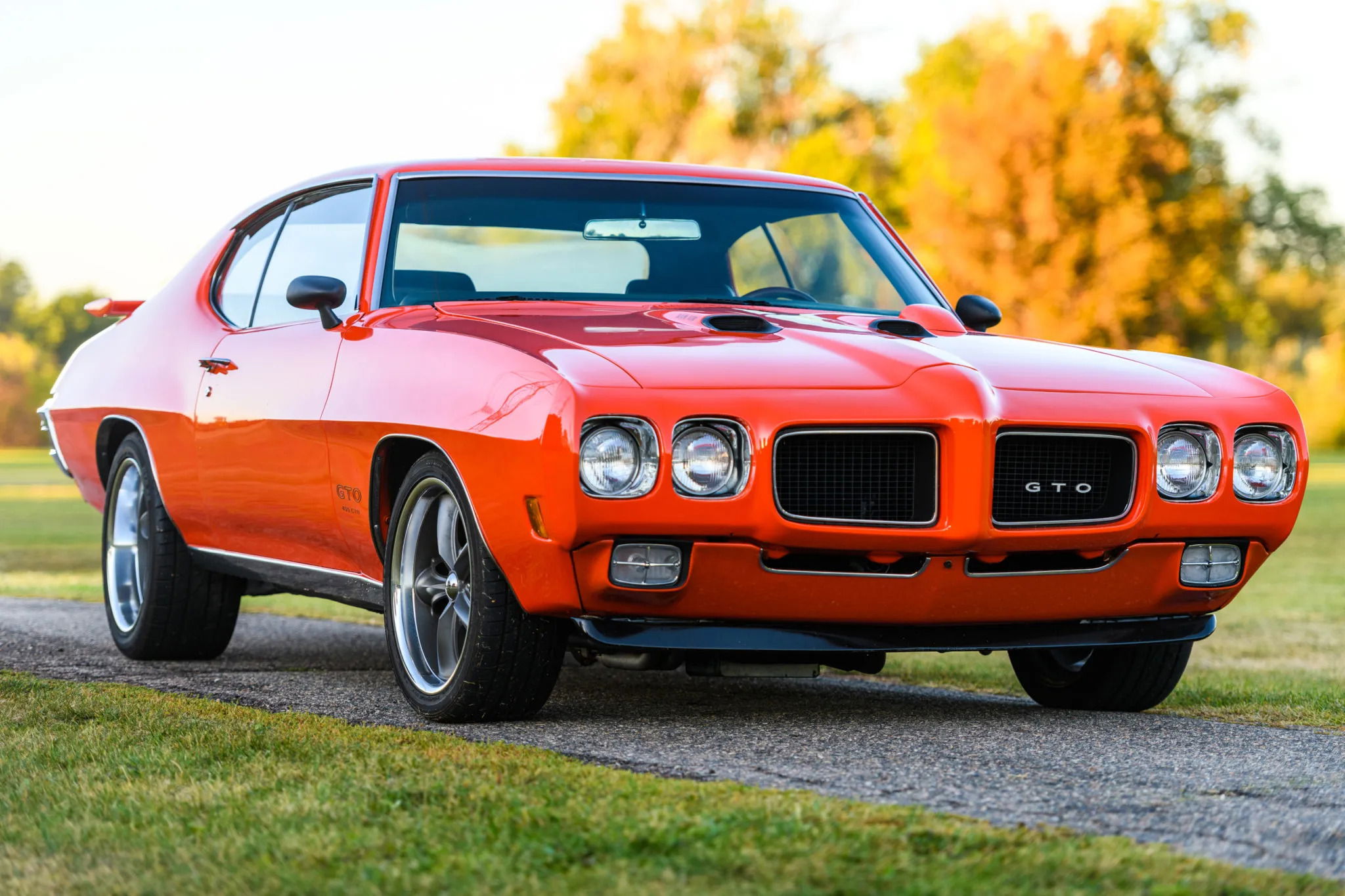
Photo Credit: Bring a Trailer
The 1970 Pontiac GTO holds a special place in automotive history. It came with several powerful engine choices, including the 400 cu-in (6.6-liter) V8 and the high-performance 455 cu-in (7.5-liter) V8. The Ram Air IV and Ram Air V engines were particularly notable for their performance.
The GTO gained global fame for its impressive speed and handling. It did 0 to 60 mph in around 6 seconds. Cosmetically, the GTO stood out with a split grille, Endura front bumper, and distinctive hood scoops. The “Judge” package added even more flair with bold graphics and a rear spoiler.
See also:
Here’s Everything You Need To Know About The "63 Split-Window Corvette
Ford Torino (1970)
- Engine: 429 cubic inch (7.0 L) Cobra Jet V8
- The Torino Cobra was a competitive muscle car with its 429 Cobra Jet engine

Photo Credit: Ford Performance
The 1970 Ford Torino came in various body styles, including hardtop, fastback, sedan, and convertible. It featured burly V8 engines, including the renowned 429 cu-in (7.0-liter) Cobra Jet and Super Cobra Jet engines, capable of impressive acceleration and speed.
Collectors place a premium on the 1970 model year due to its performance capabilities and classic styling.
1980s-1990s
Buick Grand National GNX (1987)
- Engine: 3.8 L V6 Turbocharged
- Although not a V8, the GNX's turbocharged V6 was highly potent
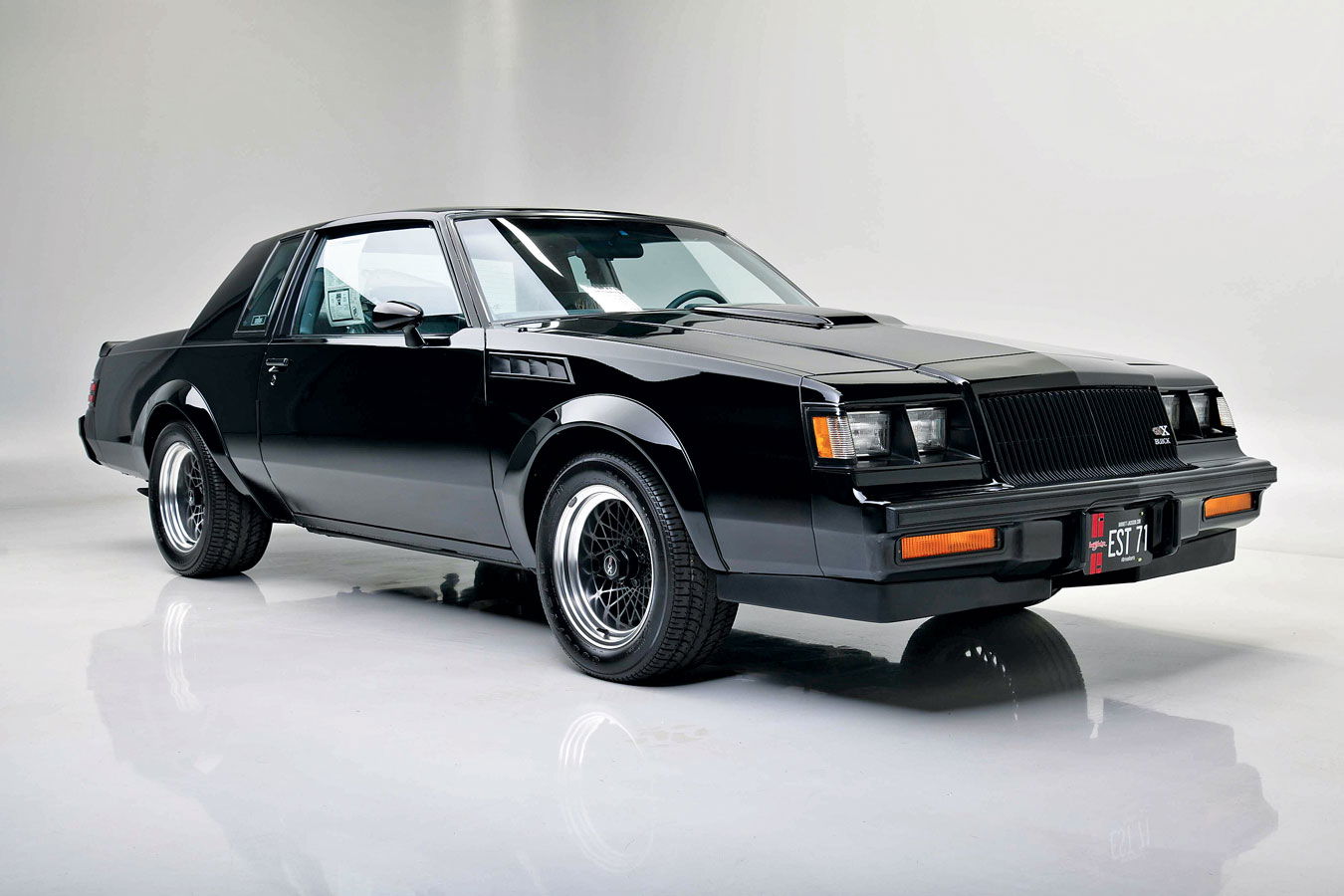
Photo Credit: Sports Car Market
The 1987 Buick Grand National GNX is a legend considered one of the most powerful and iconic vehicles of its era. It was equipped with a turbocharged 3.8-liter V6 engine featuring a special Garrett T-3 turbocharger with a ceramic impeller, an upgraded intercooler, and a recalibrated engine control unit.
This setup produced 276 horsepower and 360 lb-ft of torque, allowing the GNX to accelerate from 0 to 60 mph in just 4.7 seconds. The GNX stood out with an all-black exterior, fender flares, and unique badging.
It also featured wider wheels and tires to handle the increased power. Only 547 units of the GNX were produced, making it a highly sought-after collector’s item.
Chevrolet Corvette C4 ZR-1 (1990-1995)
- Engine: 5.7 L LT5 V8
- The ZR-1 featured the LT5 V8 engine, developed in collaboration with Lotus

Photo Credit: Corvette Forum
The 1990-1995 Chevrolet Corvette C4 ZR-1 (fondly called “King of the Hill”) is a high-performance version of the standard Corvette C4. It featured the LT5 engine, a 5.7-liter V8 designed with significant input from Lotus.
This engine was unique for its time, boasting a dual overhead cam (DOHC) design and four valves per cylinder, producing 375 horsepower initially, which was later increased to 405 horsepower. The engine transmitted power to the wheels via a ZF six-speed manual gearbox.
It enabled the Corvette to set multiple world endurance records, including covering 4,221.26 miles at an average speed of 175.885 mph. The C4 ZR-1 included the FX3 Selective Ride Control, an electronic damper system that allowed drivers to adjust the suspension settings. Despite the C4 ZR-1’s performance credentials, only 6,939 units were made between 1990 and 1995.
Dodge Viper RT/10 (1992-2002)
- Engine: 8.0 L V10
- The Viper's massive V10 engine delivered extraordinary performance, with 400-450 horsepower

Photo Credit: Autosport Designs
The 1992-2002 (first/second generation) Dodge Viper RT/10 is an iconic American sports car known for its raw, unrefined power without modern failsafe like ABS or traction control.
The second generation (1996–2002) introduced improvements such as increased power, better handling, and more refined features. The side exhaust was replaced with a rear-exit design, and a removable hardtop became available.
The Viper RT/10 was powered by an 8.0-liter V10 engine, producing 400 horsepower initially, which was later increased to 450 horsepower. A 6-speed manual transmission channeled power to the rear wheels, allowing it to race to 60 mph in 4.6 seconds.
See also:
2000s-2010s
Chevrolet Corvette Z06 (2006-2013)
- Engine: 7.0 L LS7 V8
- The C6 Z06 featured the 7.0 L LS7 V8 engine with 505 horsepower

Photo Credit: Bring a Trailer
The 2006-2013 Chevrolet Corvette Z06 is part of the C6 generation and a high-performance version of the standard Corvette. It’s one of history’s regular production cars blessed with a big engine.
It features a 7.0-liter LS7 V8 engine, producing 505 horsepower and 470 lb-ft of torque. This engine allows the Z06 to accelerate from 0 to 60 mph in just 3.7 seconds.
The car benefited from a lightweight aluminum frame, carbon fiber components, and a fixed roof for added rigidity. It also featured wider fenders and a rear spoiler for improved aerodynamics.
Ford Mustang Shelby GT500 (2013)
- Engine: 5.8 L Supercharged V8
- The 2013 GT500 was one of the most powerful Mustangs ever, thanks to its 662-hp supercharged V8 engine
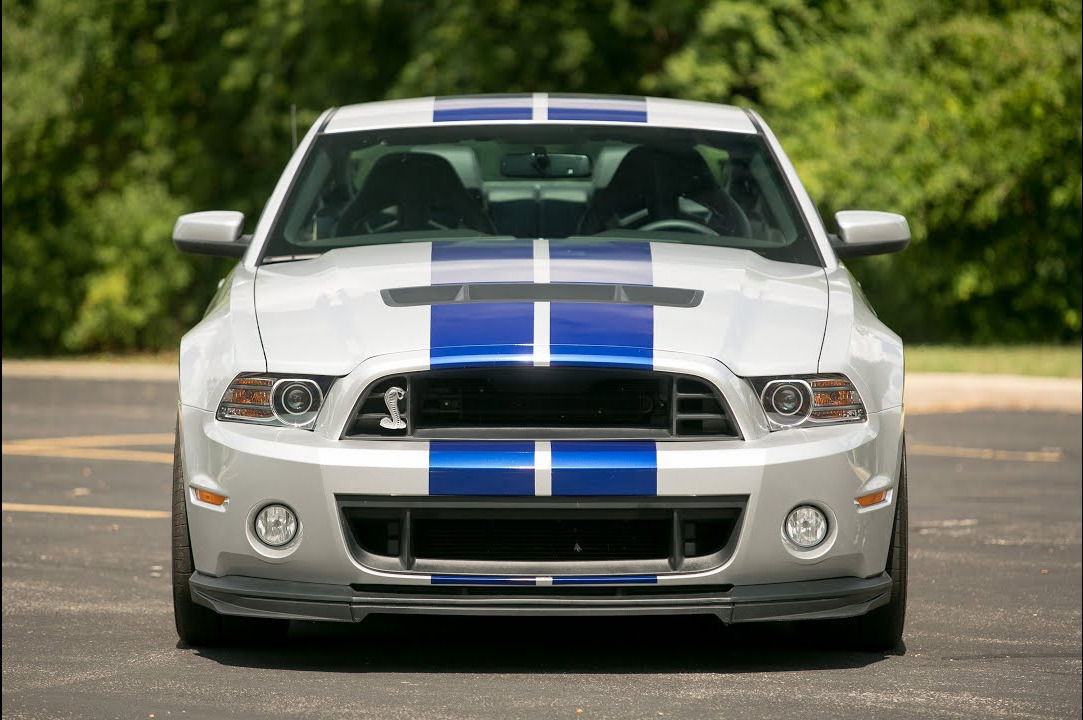
Photo Credit: YouTube/Cars.com
This high-performance variant of the Mustang is famous for its impressive power and speed, thanks to a 5.8-liter supercharged V8 engine producing a remarkable 662 horsepower and 631 lb-ft of torque.
With this plant's backing, the Shelby GT500 can accelerate from 0 to 60 mph in just about 3.5 seconds and reach a top speed of over 200 mph. The interior offers a blend of sportiness and comfort, with leather-trimmed seats, advanced infotainment systems, and optional Recaro sports seats.
Dodge Challenger SRT Hellcat (2015-present)
- Engine: 6.2 L Supercharged HEMI V8
- The Hellcat's supercharged V8 engine pushes the boundaries of modern muscle cars with over 700 horsepower
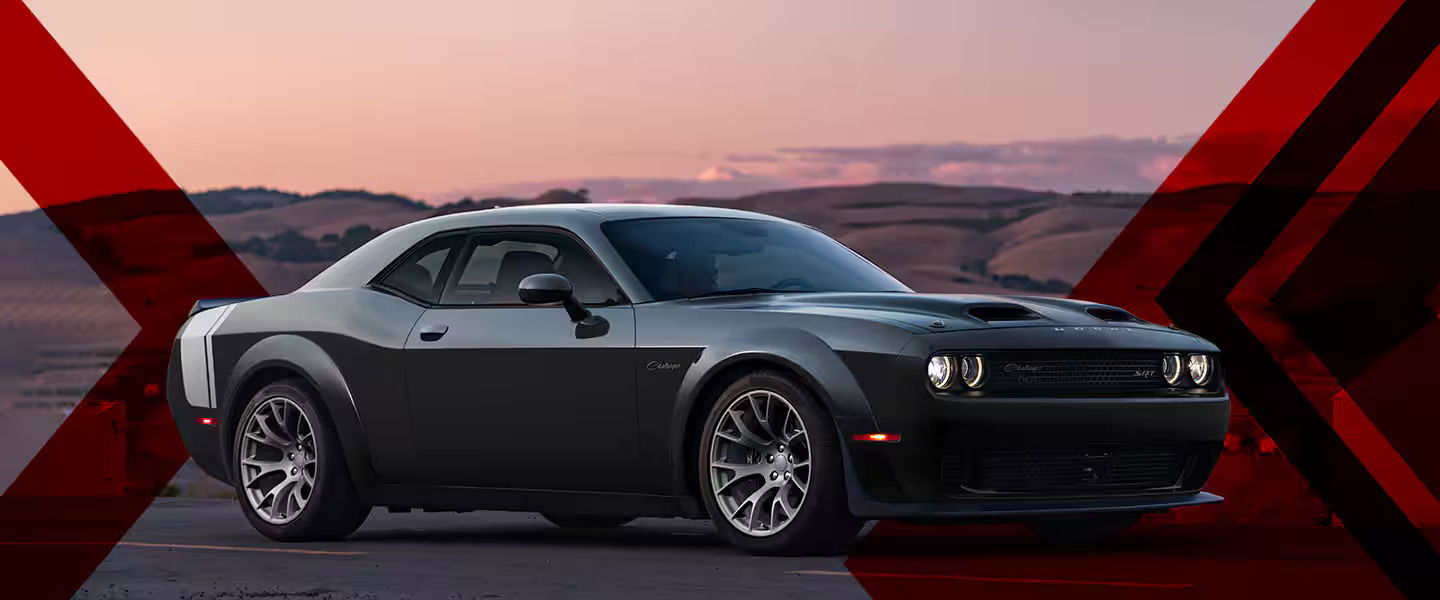
The Dodge Challenger SRT Hellcat is a beastly muscle car with incredible power and performance. It sits pretty among regular production cars with massive engines, featuring a supercharged 6.2-liter HEMI V8 engine producing an astonishing 707 horsepower and 650 lb-ft of torque.
With such power on tap, the Hellcat can sprint from 0 to 60 mph in just about 3.6 seconds and reach a top speed of around 199 mph. Cosmetically, the Hellcat flaunts an aggressive and retro-inspired design, highlighted by a wide body, distinctive front grille, and dual air extractors on the hood.
The interior mixed modern technology and a classic muscle car feel, with features like the Uconnect infotainment system, leather upholstery, and optional performance seats.
2020s
Chevrolet Camaro ZL1 (2020-present)
- Engine: 6.2 L LT4 Supercharged V8
- The ZL1's supercharged V8 engine produces 650 horsepower
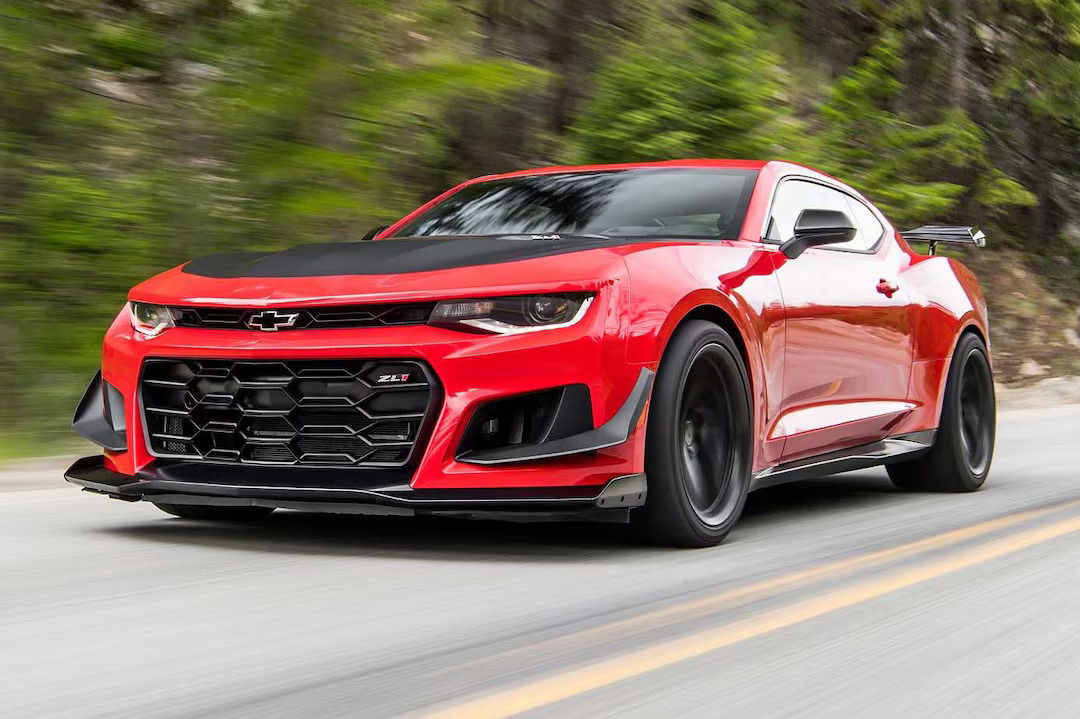
Photo Credit: MotorTrend
The new Chevrolet Camaro ZL1 is a high-performance muscle car that combines power, speed, and modern technology. The heart is a supercharged 6.2-liter V8 engine producing 650 horsepower and 650 lb-ft of torque.
It can accelerate from 0 to 60 mph in about 3.5 seconds and reach a top speed of around 198 mph.
The interior welcomes drivers to a blend of comfort and sportiness, with Recaro performance seats, a flat-bottom steering wheel, and advanced infotainment systems. Chevrolet builds the ZL1 for those who crave high performance and a thrilling driving experience.
Ford Mustang Shelby GT500 (2020-present)
- Engine: 5.2 L Supercharged V8
- The latest GT500 set new performance benchmarks with its 760-hp supercharged V8
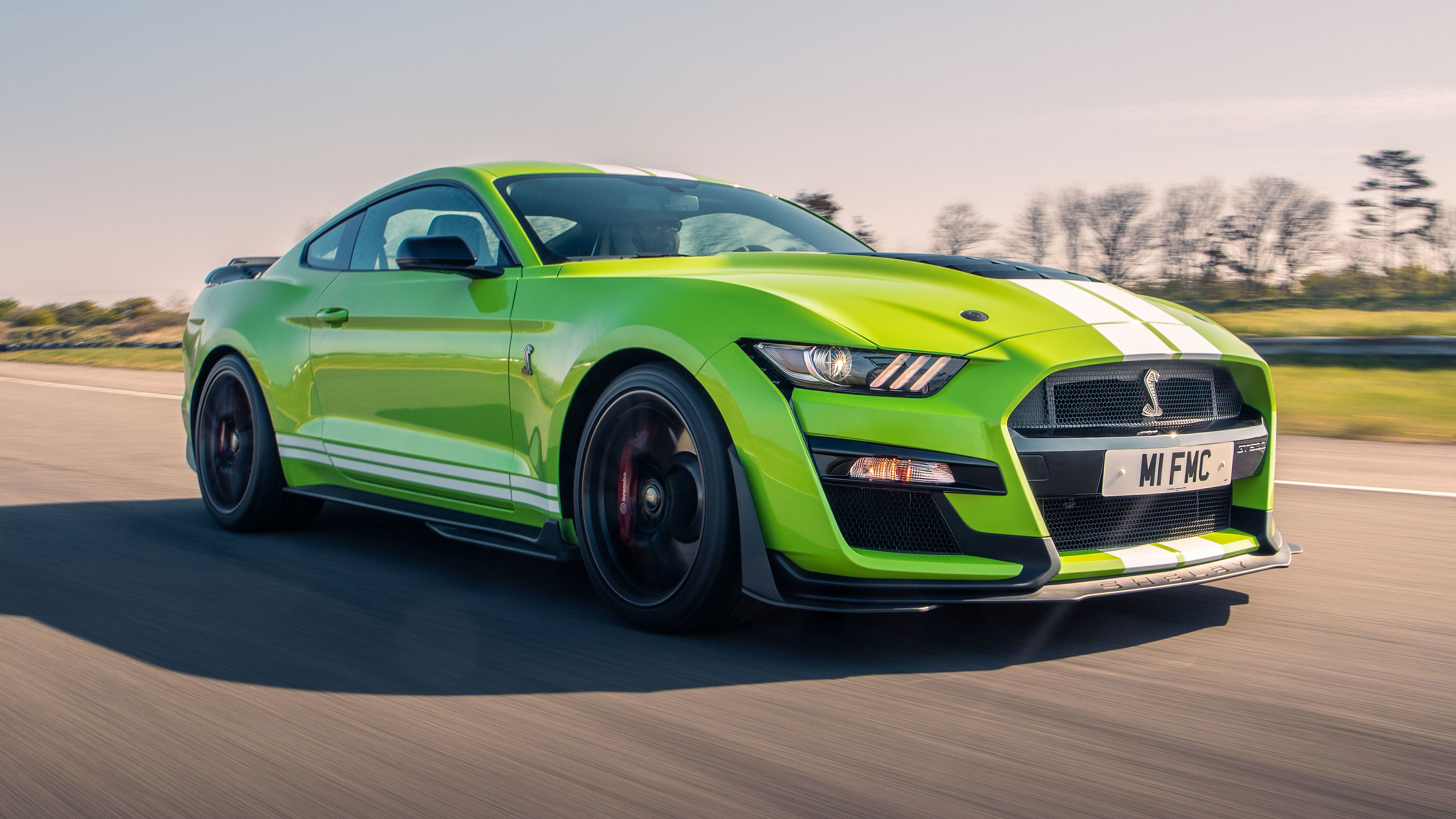
Photo Credit: TopGear
The current Ford Mustang Shelby GT500 high-performance muscle car stuns with incredible power and advanced technology. The heart is a supercharged 5.2-liter V8 engine, delivering an impressive 760 horsepower and 625 lb-ft of torque.
It’s enough to propel the American classic to 60 mph in about 3.3 seconds and a top speed of around 180 mph. A7-speed dual-clutch automatic transmission provided rapid gear changes while routing power to the rear wheels. It also offers optional carbon fiber wheels and a track-focused Carbon Fiber Track Pack.
Dodge Charger SRT Hellcat Redeye (2021-present)
- Engine: 6.2 L Supercharged HEMI V8
- With 797 horsepower, the Redeye variant continues the tradition of high-powered, big-engine muscle cars
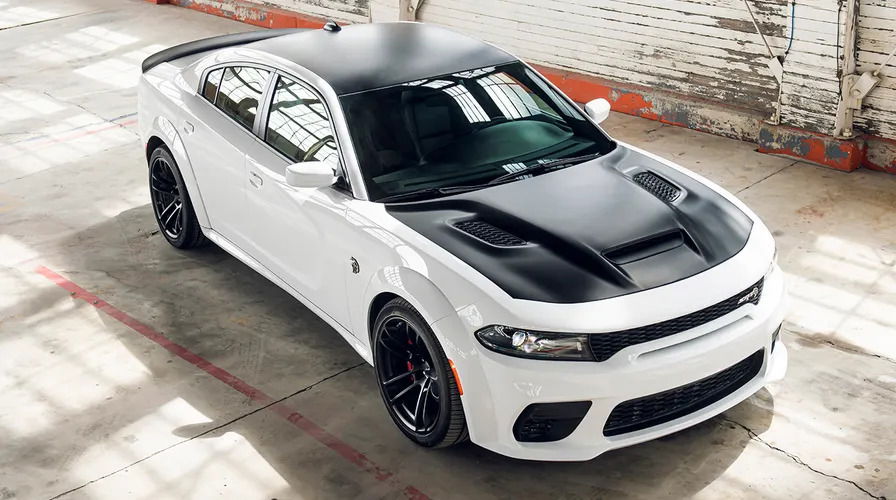
The Dodge Charger SRT Hellcat Redeye represents the latest interpretation of the high-performance variant of the Dodge Charger. It gained its incredible power from a burly 6.2-liter supercharged Hemi V8 engine, producing a whopping 797 horsepower at 6,300 rpm and 707 lb-ft of torque at 4,500 rpm.
It allows the Redeye to see a 0-60 mph sprint time of around 3.6 seconds and a top speed of 203 mph. It finished the quarter-mile sprint in 10.6 seconds. Unfortunately, drivers will have to make do with an 8-speed automatic transmission and an EPA-estimated fuel economy of 12/21 mpg city/highway driving.